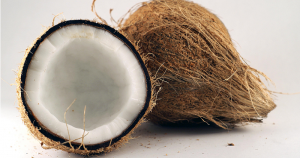
Coconuts May Inspire Scientists To Make Earthquake-proof Buildings
Coconuts are renowned for their hard shells and now, according to the latest study, the specialised structure of their walls could help to design buildings that can withstand earthquakes and other natural disasters.
Coconut palms are known to grow up to 30 m high, meaning that when the ripe fruits fall to the ground; their walls have to withstand the impact to stop them from splitting open. To protect the inner seed, the coconut shell consists of a complex structure of three layers: the outer brown, leathery exocarp, a fibrous mesocarp and a tough inner endocarp surrounding the pulp which contains the developing seedling.

As part of a project on “Biological Design and Integrative Structures,” researchers from the Plant Biomechanics Group of the University of Freiburg in Germany have been working with civil engineers and material scientists to investigate how this complex structure of a coconut could be applied in architecture. They used compression machines and an impact pendulum to determine how the protective layers disperse energy upon impact.
“By analysing the fracture behaviour of the samples and combining this with knowledge about the shell’s anatomy gained from microscopy and computed tomography, we aimed to identify mechanically relevant structures for energy absorption,” said researcher Stefanie Schmier in a press release.

The team found that within the inner endocarp layer has a ladder-like vascular system, which is made up of highly lignified stone cells, that is thought to help withstand bending forces. Each cell is surrounded by several lignified rings, joined together by parallel bridges.
“The endocarp seems to dissipate energy via crack deflection” noted Schmier, adding “This means that any newly developed cracks created by the impact don’t run directly through the hard shell”.
The researchers said the angle of the vascular bundles helps to “divert” the trajectory of the cracks. Hence, the longer a crack has to travel within the endocarp, the more likely it is to stop growing before it gets too big.
They concluded that if textile fibres within concrete are arranged so that they mimic that of the coconut, then it could help to construct buildings which are stronger. This would be particularly useful in earthquake-prone areas, by making sure that buildings do not crack and topple when the ground starts shaking.
“This combination of lightweight structuring with high energy dissipation capacity is of increasing interest to protect buildings against earthquakes, rockfall and other natural or man-made hazards,” noted Schmier.